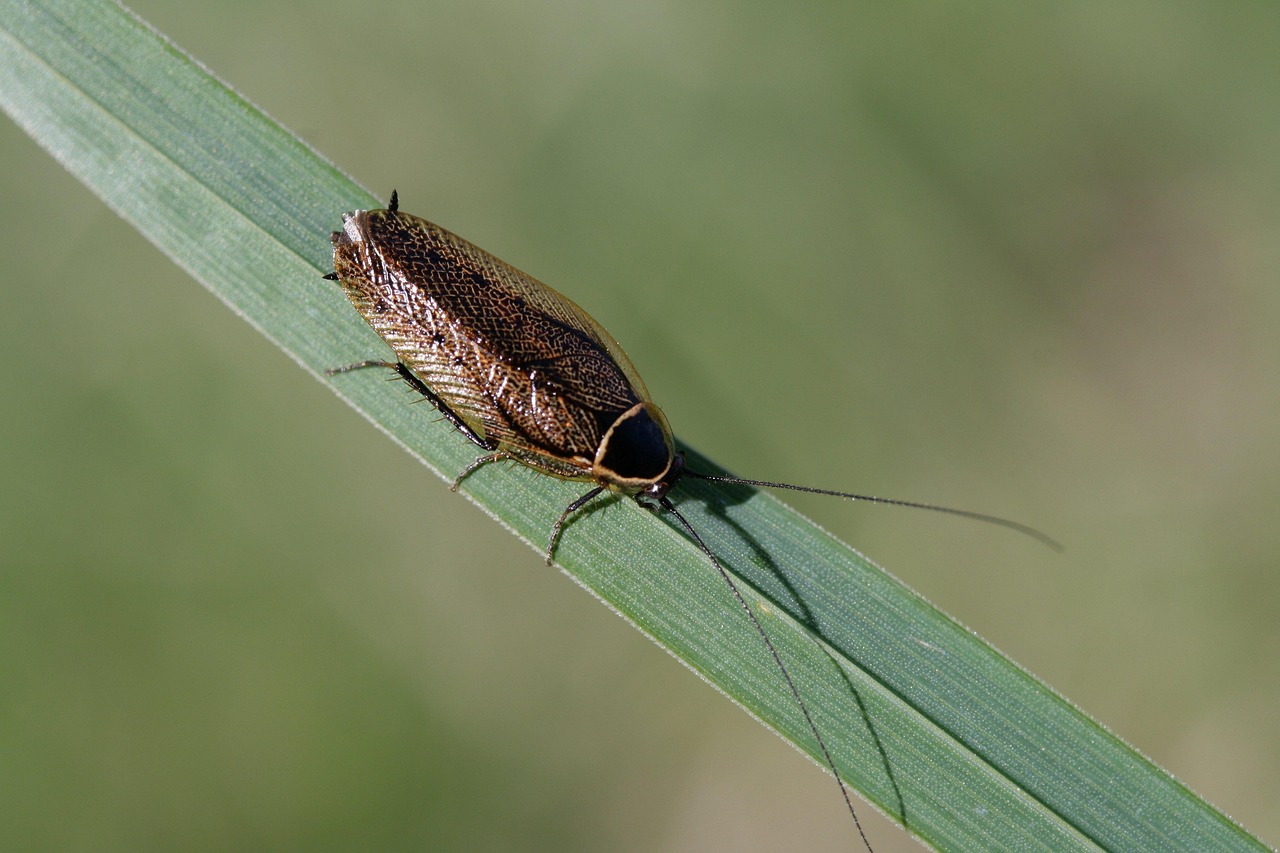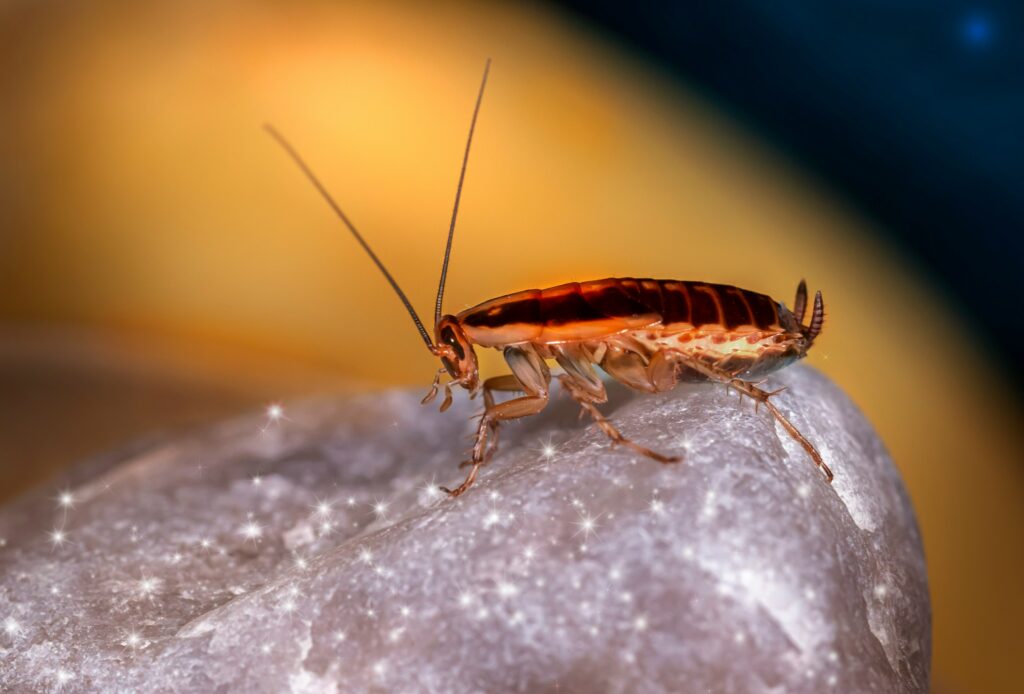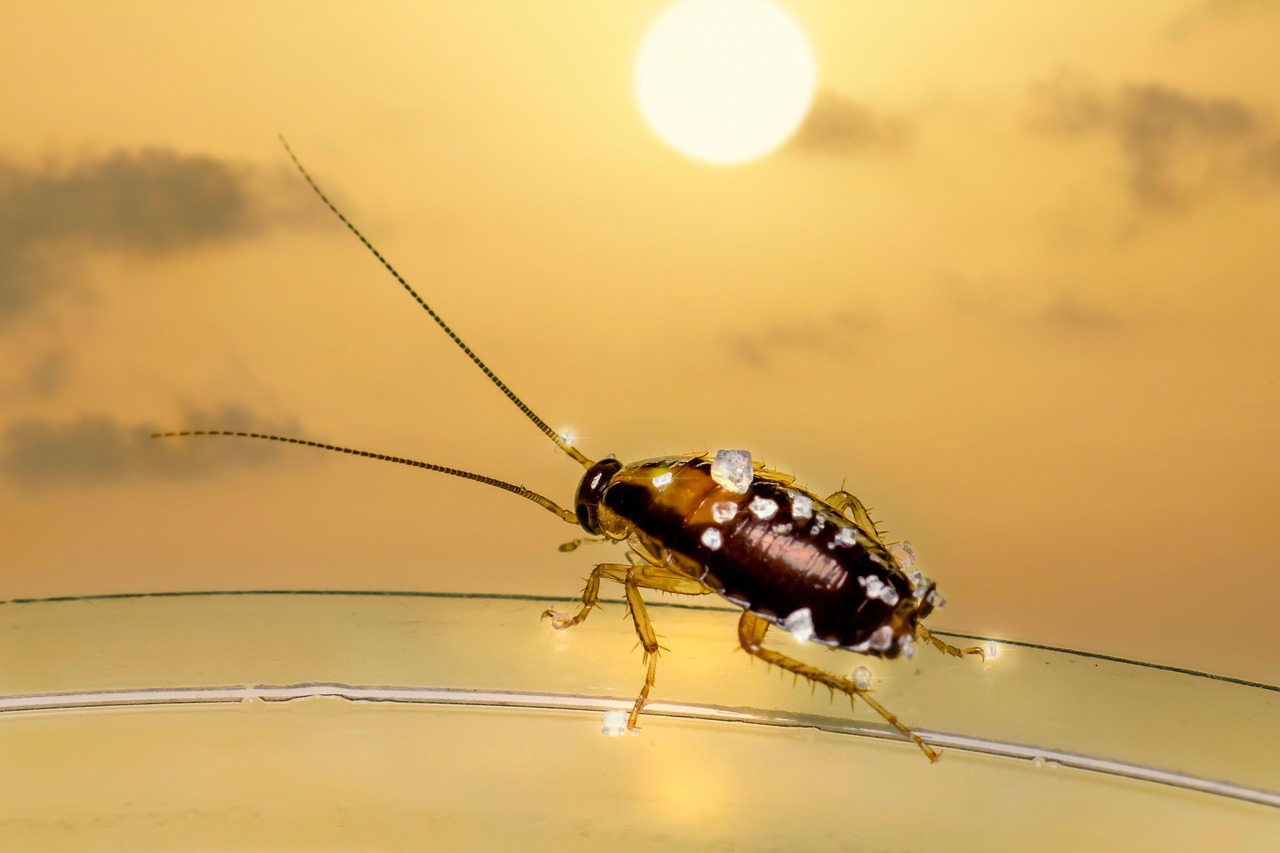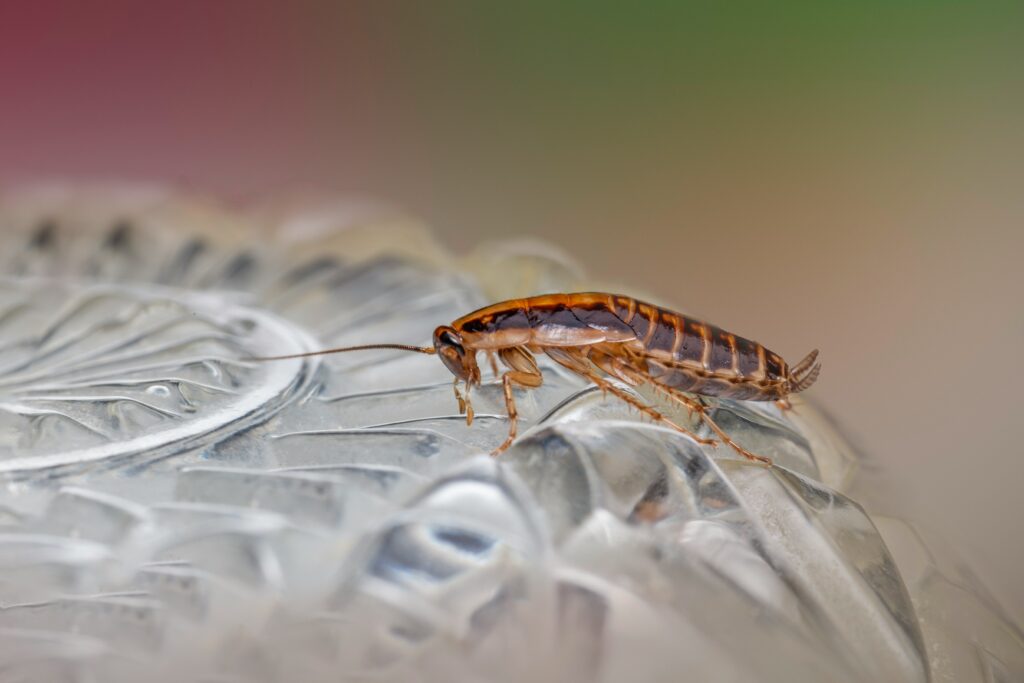Picture this: you’re underwater, holding your breath, and after just 30 seconds your lungs are screaming for air. Meanwhile, a cockroach sitting on your bathroom counter could theoretically hold its breath for nearly three-quarters of an hour without breaking a sweat. This isn’t some superhero fantasy – it’s cold, hard science that reveals one of nature’s most fascinating survival mechanisms.
While most people view cockroaches as nothing more than unwelcome kitchen invaders, these ancient survivors possess respiratory abilities that would make Olympic divers weep with envy. Their extraordinary breath-holding capacity isn’t just a party trick; it’s a window into millions of years of evolutionary perfection and a testament to life’s incredible adaptability.
The Ancient Masters of Survival
Cockroaches have been perfecting their survival skills for over 300 million years, making them older than dinosaurs and far more successful at avoiding extinction. These resilient creatures witnessed the rise and fall of countless species while quietly mastering the art of biological efficiency. Their breath-holding ability represents just one chapter in their remarkable survival story.
During their evolutionary journey, cockroaches developed numerous adaptations that allowed them to thrive in environments where other creatures would perish. From surviving nuclear radiation levels that would kill humans to living for weeks without their heads, these insects have become nature’s ultimate survivors. Their respiratory system evolved to handle extreme conditions, including periods when oxygen becomes scarce or when submersion in water threatens their survival.
Understanding the Cockroach Respiratory System

Unlike humans who rely on lungs and blood to transport oxygen, cockroaches use a completely different breathing mechanism called the tracheal system. This network of tubes, called tracheae, branches throughout their body like an intricate highway system, delivering oxygen directly to cells without the need for blood circulation. Think of it as having thousands of tiny straws running through your body, each one capable of drawing air directly to where it’s needed.
The tracheal system opens to the outside world through small holes called spiracles, located along the sides of the cockroach’s body. These spiracles act like controllable valves, opening and closing to regulate air flow and prevent water from entering the respiratory system. When a cockroach needs to conserve oxygen or avoid drowning, it can seal these spiracles completely, creating an airtight biological submarine.
This direct oxygen delivery system proves far more efficient than our human lungs in many ways. While we must pump blood throughout our bodies to carry oxygen, cockroaches eliminate this energy-expensive middleman entirely.
The 40-Minute Breath-Holding Record
Scientists have documented cockroaches holding their breath for up to 40 minutes under laboratory conditions, a feat that seems impossible for creatures so small. This extraordinary ability stems from their unique combination of efficient oxygen storage, minimal metabolic demands, and precise control over their respiratory system. During these extended breath-holding sessions, cockroaches enter a state similar to suspended animation, dramatically reducing their energy consumption.
The key to their success lies in their ability to store oxygen within their tracheal system and use it with remarkable efficiency. When spiracles close, the trapped air within the tracheal network becomes a precious oxygen reserve that must last until breathing resumes. Cockroaches have mastered the art of rationing this stored oxygen, using only what’s absolutely necessary for basic cellular functions.
Research has shown that different cockroach species exhibit varying breath-holding capabilities, with some tropical species demonstrating even longer periods of respiratory suspension than their temperate cousins.
Metabolic Slowdown: The Secret Weapon
When cockroaches hold their breath, they don’t simply stop breathing and hope for the best. Instead, they initiate a sophisticated metabolic slowdown that reduces their oxygen consumption to a fraction of normal levels. This biological dimmer switch allows them to stretch their oxygen reserves far beyond what would be possible at normal metabolic rates.
During this slowdown, non-essential bodily functions virtually shut down, while critical processes continue at minimal energy cost. Heart rate drops dramatically, muscle activity ceases except for essential functions, and even brain activity reduces to basic survival operations. It’s like switching a high-performance computer to power-saving mode, maintaining core functions while dramatically reducing energy consumption.
This metabolic flexibility represents one of evolution’s most elegant solutions to survival challenges. By learning to live in slow motion when necessary, cockroaches can survive conditions that would quickly kill less adaptable creatures.
Water Survival and Drowning Prevention

The ability to hold breath for extended periods serves cockroaches particularly well when they encounter water, which happens more often than you might think. These insects frequently navigate through sewers, drains, and flooded areas where submersion becomes unavoidable. Their breath-holding capability transforms what could be a death sentence into merely an inconvenient detour.
When submerged, cockroaches can seal their spiracles completely, preventing water from entering their respiratory system while conserving whatever oxygen remains trapped inside. This biological scuba gear allows them to survive underwater long enough to find an escape route or wait for water levels to recede. Some species have even been observed using air bubbles trapped in their body hairs as supplementary oxygen sources during submersion.
The implications extend beyond simple survival – this adaptation allows cockroaches to colonize environments that would be off-limits to other insects, expanding their ecological niche and contributing to their worldwide success.
Temperature and Environmental Factors
Environmental conditions dramatically influence how long cockroaches can hold their breath, with temperature playing the most significant role. In cooler temperatures, their metabolic rate naturally decreases, extending their breath-holding capacity well beyond the 40-minute mark. Conversely, higher temperatures accelerate their metabolism, shortening the time they can survive without fresh oxygen.
Humidity levels also affect their respiratory performance, as cockroaches must balance water conservation with gas exchange. In extremely dry conditions, they may partially close their spiracles to prevent excessive moisture loss, inadvertently practicing for longer breath-holding sessions. This environmental responsiveness demonstrates the remarkable plasticity of their respiratory system.
Scientists have observed that cockroaches living in consistently challenging environments often develop enhanced breath-holding abilities compared to their counterparts in more stable conditions. This suggests that respiratory endurance can be fine-tuned through environmental pressure, adding another layer to their adaptability.
Comparison with Other Insects
While cockroaches excel at breath-holding, they’re not the only insects with impressive respiratory control. Diving beetles can remain submerged for hours using air bubbles as external gills, while some aquatic insect larvae have evolved specialized breathing apparatus for underwater life. However, few terrestrial insects match the cockroach’s combination of breath-holding duration and environmental versatility.
Ants, despite their social sophistication, typically cannot survive more than a few minutes without air circulation. Flies and mosquitoes, with their more delicate respiratory systems, fare even worse in oxygen-deprived conditions. This comparison highlights just how exceptional the cockroach’s respiratory adaptation truly is among terrestrial insects.
The cockroach’s ability to switch between normal breathing and extended breath-holding gives them a survival advantage that few other insects possess, contributing significantly to their status as one of nature’s most successful insect groups.
Evolutionary Advantages and Natural Selection

The evolution of extended breath-holding ability in cockroaches represents a classic example of natural selection favoring traits that enhance survival in challenging environments. Over millions of years, cockroaches that could survive longer without air had better chances of surviving floods, predator encounters, and other life-threatening situations where normal breathing became impossible.
This respiratory prowess likely evolved alongside their other famous survival traits, creating a comprehensive toolkit for enduring extreme conditions. The ability to hold breath for extended periods complemented their radiation resistance, temperature tolerance, and ability to survive without food, making them nearly indestructible in the insect world.
Modern cockroaches inherited this remarkable ability from ancestors who faced far more dramatic environmental challenges than today’s relatively stable world. Their breath-holding capacity may seem excessive for contemporary urban environments, but it reflects preparation for survival scenarios that shaped their evolutionary history.
Scientific Research and Discovery Methods
Researchers studying cockroach respiratory abilities use sophisticated equipment to monitor oxygen consumption, spiracle activity, and metabolic rates during extended breath-holding sessions. High-speed cameras capture the precise moment spiracles close, while sensors track internal oxygen levels throughout the process. These studies require incredible patience, as scientists must observe insects that appear completely motionless for nearly an hour.
Laboratory conditions allow researchers to control temperature, humidity, and other variables while testing the limits of cockroach respiratory endurance. Some experiments involve submerging cockroaches in specially designed chambers that prevent escape while monitoring their survival time and behavior. These controlled conditions have revealed the true extent of their breath-holding capabilities.
Recent advances in micro-sensor technology have enabled scientists to study cockroach respiration in unprecedented detail, revealing the precise mechanisms behind their extraordinary respiratory control. This research continues to uncover new aspects of their survival strategy that were previously hidden from scientific observation.
Implications for Pest Control

Understanding cockroach respiratory abilities has significant implications for pest control strategies, as traditional methods often underestimate their survival capabilities. Many insecticides work by disrupting normal breathing patterns, but cockroaches can potentially survive initial exposure by entering their breath-holding mode until the chemical threat passes.
Water-based elimination methods also face challenges, as cockroaches can survive submersion far longer than most people realize. This knowledge has led to the development of more persistent pest control approaches that account for their extended survival capabilities. Professional exterminators now understand that apparent elimination doesn’t guarantee success, as seemingly dead cockroaches may simply be in respiratory suspension.
The pest control industry has adapted by developing multi-stage treatment protocols that remain effective even when cockroaches employ their survival tactics. This scientific understanding has improved treatment success rates and reduced the likelihood of cockroach populations recovering after initial control efforts.
Medical and Biological Research Applications

Cockroach respiratory research has sparked interest in medical applications, particularly in understanding how organisms can survive extended periods with limited oxygen. Their metabolic slowdown mechanisms offer insights that could potentially benefit human medicine, especially in emergency situations where oxygen supply becomes limited.
Researchers are investigating whether the principles behind cockroach breath-holding could inform treatments for conditions involving oxygen deprivation. The precise control they exercise over their respiratory system provides a natural model for understanding voluntary breathing control and metabolic regulation. Some scientists are even exploring whether similar mechanisms could be artificially induced in other organisms.
The study of cockroach respiration has also contributed to our understanding of evolution, metabolism, and survival strategies across different species. Their respiratory system serves as a perfect example of how environmental pressures can shape biological adaptations over evolutionary time scales.
Environmental and Climate Adaptation
Climate change and environmental fluctuations make the cockroach’s respiratory adaptability increasingly relevant to their continued success. As global temperatures rise and weather patterns become more unpredictable, the ability to survive temporary oxygen shortages could prove even more valuable. Their breath-holding capability provides a buffer against environmental shocks that might overwhelm less adaptable species.
Rising sea levels and increased flooding in urban areas create new scenarios where respiratory endurance becomes crucial for survival. Cockroaches living in coastal cities may find their breath-holding abilities tested more frequently as extreme weather events become more common. Their evolutionary preparation for such challenges positions them well for an uncertain environmental future.
The flexibility of their respiratory system also allows rapid adaptation to new environments, whether natural or human-created. This adaptability suggests that cockroaches will continue thriving even as environmental conditions change around them.
The Bigger Picture: What This Means for Life on Earth

The cockroach’s extraordinary breath-holding ability represents more than just an interesting biological quirk – it demonstrates the incredible diversity of survival strategies that life has developed over millions of years. Their respiratory mastery reminds us that nature’s solutions often surpass human engineering in elegance and efficiency.
This capability also highlights how seemingly simple creatures can possess remarkably sophisticated biological systems. While we often focus on large, charismatic animals when considering evolutionary marvels, insects like cockroaches have quietly perfected survival mechanisms that put many larger animals to shame. Their success story offers valuable lessons about resilience, adaptation, and the power of evolutionary refinement.
Understanding these mechanisms helps us appreciate the complexity of ecosystems and the intricate relationships between organisms and their environments. Even pest species like cockroaches play important roles in nature’s grand design, demonstrating survival strategies that have been tested and refined over geological time scales.
The next time you encounter a cockroach in your home, remember that you’re looking at one of evolution’s most successful experiments – a creature capable of holding its breath longer than most humans can stay underwater, equipped with survival mechanisms that have endured for hundreds of millions of years. Their remarkable respiratory abilities remind us that in nature’s arena, the most unassuming competitors often possess the most extraordinary talents. What other hidden superpowers might be lurking in the creatures we barely notice?

